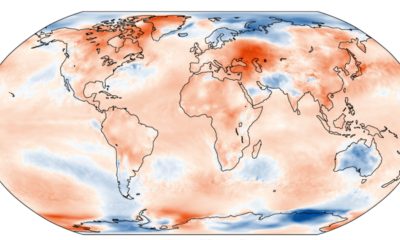קלימאַט טוישן
וואָס איז טשאַד נייטראַלאַטי און ווי קען מען דערגרייכן 2050?

In order to limit global warming to 1.5 degrees Celsius – a threshold the Intergovernmental Panel for Climate Change (IPCC) suggests is safe –carbon neutrality by mid-21st century is essential. This target is also laid down in the פּאַריז העסקעם signed by 195 countries, including the EU.
In November 2019, the European Commission presented the אייראפעישער גרין דיל, its flagship plan that aims to make Europe climate neutral by 2050.
-
Reach global peaking of greenhouse gas emissions as soon as possible.
-
Undertake rapid reductions.
What is carbon neutrality?
Carbon neutrality means having a balance between emitting carbon and absorbing carbon from the atmosphere in carbon sinks. Removing carbon oxide from the atmosphere and then storing it is known as carbon sequestration. In order to achieve net zero emissions, all worldwide greenhouse gas emissions will have to be counterbalanced by carbon sequestration.
Carbon sink is any system that absorbs more carbon than it emits. The main natural carbon sinks are soil, פאָראַס and oceans. According to estimates, natural sinks remove between 9.5 and 11 Gt of CO2 per year. Annual global CO2 emissions reached קסנומקס גט אין קסנומקס.
To date, no artificial carbon sinks are able to remove carbon from the atmosphere on the necessary scale to fight global warming.
The carbon stored in natural sinks such as forests is released into the atmosphere through forest fires, changes in land use or logging. This is why it is essential to רעדוצירן טשאַד ימישאַנז in order to reach climate neutrality.
קאַרבאָן אָפסעטינג
Another way to reduce emissions and to pursue carbon neutrality is to offset emissions made in one sector by reducing them somewhere else. This can be done through investment in רינואַבאַל ענערגיע, ענערגיע עפעקטיווקייַט or other clean, low-carbon technologies. The EU’s ימישאַן טריידינג סיסטעם (ETS) is an example of a carbon offsetting system.
EU goals
The European Union is committed to an ambitious climate policy. Under the Green Deal it aims to become continent that removes as many CO2 emissions as it produces by 2050. This goal will become legally binding if the European Parliament and Council adopt the new Climate Law. The EU’s interim emission reduction target for 2030 would also be updated from the current 40% reduction to a more ambitious one.
The Parliament’s environment committee voted on 11 September in favour of climate neutrality by 2050 and of a 60% emission reduction target by 2030 compared to the 1990 level - more ambitious than the Commission’s initial proposal of 50-55%. Committee members are calling for the Commission to set an additional interim target for 2040 to ensure progress towards the final goal.
In addition, committee members called for all EU countries individually to become climate neutral and insisted that after 2050, more CO2 should be removed from atmosphere than is emitted. Also, all direct or indirect subsidies to fossil fuels should be phased out by 2025 at the latest.
The Parliament as a whole will vote on the Climate Law during the plenary session on 5-8 October, after which it can start negotiations with the Council.
Currently five EU countries have set the target of climate neutrality in law: Sweden aims to reach net-zero emissions by 2045 and Denmark, France, Germany and Hungary by 2050.
Find out more about how the EU helps to reduce CO2 emissions
שער דעם אַרטיקל:
-

 פּראָסט פרעמד און סעקוריטי פּאָליטיקקסנומקס טעג צוריק
פּראָסט פרעמד און סעקוריטי פּאָליטיקקסנומקס טעג צוריקאי.יו. פרעמד פּאָליטיק טשיף מאכט פּראָסט סיבה מיט וק צווישן גלאבאלע קאַנפראַנטיישאַן
-

 ברעקסיטקסנומקס טעג צוריק
ברעקסיטקסנומקס טעג צוריקא נייע בריק פאר יונגע אייראפעער אויף ביידע זייטן פונעם קאנאל
-

 קירגיזיעקסנומקס טעג צוריק
קירגיזיעקסנומקס טעג צוריקדי פּראַל פון מאַסע רוסיש מיגראַטיאָן אויף עטניק טענסיאָנס אין קירגיזיע
-

 יראַןקסנומקס טעג צוריק
יראַןקסנומקס טעג צוריקפארוואס איז דער רוף פון די אי.יו. פּאַרליאַמענט צו רשימה די IRGC ווי אַ טעראָר אָרגאַניזאַציע נאָך נישט גערעדט?
























